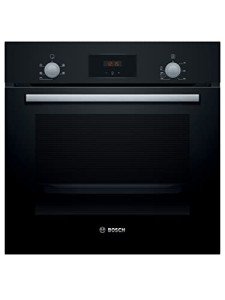An Oven Built In Success Story You'll Never Be Able To
The Rise of Built-In Ovens: A Comprehensive Guide
Worldwide of contemporary cooking areas, built-in ovens have actually sculpted a niche for themselves, changing both the functionality and aesthetic appeal of cooking areas. This post explores the various advantages of built-in ovens, their installation factors to consider, and a contrast with conventional freestanding models.
Comprehending Built-In Ovens
Built-in ovens are developed to be integrated perfectly into kitchen cabinets, providing a smooth and sophisticated appearance. Unlike freestanding designs, which rest on the floor, built-in ovens are installed at eye level or under counter tops, making them ergonomic and easy to gain access to.
Kinds Of Built-In Ovens
Built-in ovens can be found in numerous types, each dealing with various cooking requirements and preferences. Here's a short overview:
- Single Built-In Oven: Ideal for smaller sized cooking areas, supplying ample cooking space for many requirements.
- Double Built-In Oven: Offers separate compartments for cooking, best for bigger households or those who frequently entertain visitors.
- Steam Ovens: Utilizes steam cooking for much healthier meals, maintaining nutrients and moisture.
- Convection Ovens: Equipped with fans to flow hot air evenly, guaranteeing quicker and more constant cooking.
Type
Description
Best for
Single Built-In
One roomy oven compartment
Little families
Double Built-In
2 compartments for synchronised cooking
Large households
Steam Oven
Steam-based cooking approach
Health-conscious cooks
Convection Oven
Fan-assisted cooking for even heat circulation
Those who bake often
Benefits of Built-In Ovens
Aesthetic Appeal
Built-in ovens offer a sleek, integrated look that boosts the total look of a kitchen. They are available in numerous styles and finishes that can match existing kitchen cabinetry and design, creating a structured and cohesive appearance.
Space Efficiency
Developed to fit seamlessly into kitchen styles, built-in ovens can conserve important flooring space, making them ideal for smaller sized cooking areas. By conserving area, house owners can take advantage of extra storage options or more counter space for food preparation.
Ergonomics
Installing ovens at eye level eliminates the need to flex down, decreasing pressure when looking at food or eliminating hot dishes. built-in double oven and hob packages is especially helpful for individuals with movement obstacles.
Adaptability
Built-in ovens often include a variety of cooking modes and features, from convection cooking to self-cleaning options, giving users versatility in their cooking methods.
Energy Efficiency
Modern built-in ovens are typically created to be more energy-efficient than conventional designs. Features such as better insulation and advanced heating aspects help minimize energy intake.
Setup Considerations
While the advantages of built-in ovens are considerable, specific aspects require to be thought about before choosing this kitchen upgrade:
Space Requirements: Built-in ovens need particular area measurements in regards to width, height, and depth. Precise dimensions should be taken into account to prevent setup problems.
Electrical and Gas Hookups: Built-in ovens may need particular electrical wiring setups or gas connections. Qualified experts need to manage this setup to ensure safety and compliance with regional codes.
Cabinets Compatibility: The design and structure of existing kitchen cabinetry needs to be assessed. Built-in models may require modifications to cabinets, or new cabinetry may require to be created to accommodate them.
Cost: Built-in ovens typically come at a premium rate compared to freestanding designs. House owners ought to examine their budget plans accordingly and think about long-lasting advantages.
Installation Steps
Below are the basic steps associated with installing a built-in oven:
- Preparation: Measure the area and get rid of old appliances if needed.
- Electrical/Gas Setup: Ensure the needed electrical or gas connections are ready and checked for compliance.
- Cabinet Adjustment: Modify kitchen cabinetry as required to fit the built-in oven.
- Positioning: Carefully place the oven into the designated space and level it.
- Connection: Connect the oven to power or gas and guarantee all fittings are safe.
- Evaluating: Turn on the oven to guarantee it operates properly.
Often Asked Questions (FAQs)
1. Are built-in ovens simple to install?
While fundamental setup can be managed by a convenient individual, it is suggested to employ a professional, specifically when handling electrical or gas fittings.
2. Can I replace my freestanding oven with a built-in oven?
Yes, however it will need careful measurement and potentially some modifications to your existing cabinets to fit the built-in model.
3. How do built-in ovens impact kitchen resale value?
Built-in ovens can enhance a kitchen's appeal, typically making it more appealing to prospective purchasers, thereby supporting a higher resale value.
4. Are built-in ovens more costly than freestanding designs?
Typically, built-in ovens are more pricey due to their style and functions. However, their boosted aesthetics and performance may validate the cost for lots of homeowners.
5. What are the best brands for built-in ovens?
Some acknowledged brand names include Bosch, Miele, KitchenAid, and Electrolux, each known for their quality and innovation.
Built-in ovens represent a substantial leap in kitchen technology, providing a blend of design, performance, and functionality. While they require careful factor to consider regarding space, installation, and expense, the benefits they provide make them an attractive choice for modern-day house owners. Whether upgrading an existing kitchen or creating a brand-new one from scratch, built-in ovens can raise the cooking experience and improve overall kitchen visual appeals. From performance to elegance, they genuinely embody the best of modern cooking services.
